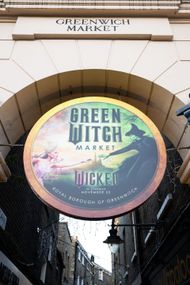Recent rumors about a possible salary disparity between Ariana Grande and Cynthia Erivo in Wicked caused quite a stir. According to said rumors, Grande was paid 15 times more than Erivo for their roles in Wicked. Before anyone starts shouting, "Unfair!" Universal Pictures came forward to deny the veracity of this while declaring that the two actresses received the same amount as payment. Okay, but let's look at this scenario and see what's been going on behind the scenes of Wicked.
Breaking the salary disparity myth?

Universal did not take long to refute what seemed like a bomb about to explode—Ariana earning $15 million, Cynthia getting $1 million. The studio insisted that the two women received the same amount for their roles in Wicked. In its defense, Universal declared that the information circulating online was based on "rumors." Even if these numbers are speculation, the studio hasn't disclosed the actual amounts paid to each actress.
In a way, this raises an important question about the film industry. Is an actor's value fairly measured, considering their talent and performance?
Supporting cast and payment inequality—who is really earning enough?
While the salary dispute between the two lead actresses generated controversy, the payment of supporting actors drew even more attention. Michelle Yeoh and Jeff Goldblum, who plays Madame Morrible and the Wizard of Oz, were supposedly paid $2 million each. Also reportedly, Jonathan Bailey, who plays Fiyero, received $450,000.
There's no official confirmation that these values are correct, which leads us to a crucial question: How does Hollywood define an actor's value? When a star's name weighs more than the quality of their performances, the industry prioritizes the shine of fame over true artistic talent. Salary disparity reflects how Hollywood still prioritizes actors' commercial power instead of focusing on what really matters—the quality of performance.
A film industry that still has many yellow brick roads to travel
We know the entertainment industry needs to rethink how it evaluates and rewards its professionals. The way of paying and valuing artistic work needs to transform, ensuring that, in the end, everyone is treated with equity, regardless of their public recognition.

The magic of Wicked—more than a spectacle, a cinematic experience
But ultimately, Wicked is not just about what happens behind the scenes—it's a transformative cinematic experience. Jon M. Chu's direction opted for a more sober color palette, in contrast with the color explosion of 1939. Instead of focusing solely on visual effects, Chu wanted to create a more real, more emotional Oz.
The choice of a more introspective aesthetic with a more modest color palette made the emotional connection between Glinda and Elphaba even more palpable. After all, it's about the enchanted world as much as it is about the real human relationships unfolding within it.
Love movies? Try our Box Office Game and Movie Grid Game to test your film knowledge and have some fun!
